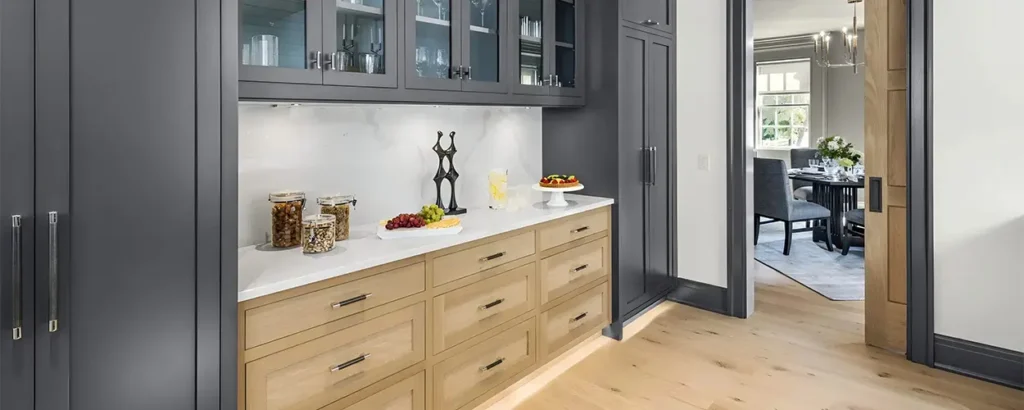Medium-Density Fiberboard, or MDF, is one of the most common and controversial materials in the woodworking world. Hailed by some for its versatility and cursed by others for its dust, it’s a material that inspires strong opinions.
Whether you’re a seasoned pro or a weekend DIYer, understanding the true strengths and weaknesses of MDF is crucial before you bring it into your shop. It’s not a replacement for solid wood or plywood; it’s a different tool altogether. This honest breakdown will give you the knowledge to decide when to embrace MDF and when to avoid it.

1. The Advantages: Why Woodworkers Love MDF
When used in the right application, MDF is an incredibly useful material. Here’s what makes it so popular:
- Perfectly Smooth, Uniform Surface: This is MDF’s greatest superpower. Unlike plywood with its voids and knots or solid wood with its grain, MDF has no natural texture. This makes it the ideal substrate for painting, as it results in a flawless, glass-like finish without any grain raising or imperfections.
- Cost-Effective and Consistent: MDF is significantly cheaper than solid wood and high-quality plywood. Its low cost makes it perfect for large projects, prototypes, or budget-friendly builds. Furthermore, every sheet is perfectly uniform in density and thickness, eliminating the worry of warping or weak spots within a single sheet.
- Excellent Workability: MDF is very easy to cut, shape, and route. It doesn’t have a grain direction, so it cuts cleanly with sharp tools without splintering or tear-out. This makes it fantastic for creating detailed CNC carvings, intricate scrollwork, and curved designs that would be difficult with other materials.
- Stable and Dimensionality Sound: MDF does not expand, contract, or warp with changes in humidity and temperature like solid wood can. This stability is a major advantage for built-in furniture like cabinets and shelves that need to maintain their shape over time.
2. The Disadvantages: The Challenges and Drawbacks
For all its benefits, MDF comes with a set of significant drawbacks that must be respected.
- Heavy and Weak Structural Integrity: MDF is extremely dense and heavy. A sheet of 3/4″ MDF is much heavier than an equivalent sheet of plywood. More importantly, it has poor strength under load and is prone to sagging over long spans. It also holds screws and nails poorly, especially near edges, often requiring specialized fasteners or reinforcement techniques.
- Moisture is Its Worst Enemy: MDF is highly susceptible to moisture damage. It acts like a sponge, readily absorbing water and humidity, which causes it to swell, weaken, and never fully recover. It is not suitable for bathrooms, kitchens, or outdoor use unless it is meticulously sealed on all sides and edges with a high-quality primer or paint.
- Dust and Safety Concerns: Working with MDF produces a tremendous amount of very fine dust that can easily become airborne. This dust contains urea-formaldehyde, a chemical used in the resin binder of most standard MDF. Proper safety gear is non-negotiable: always wear a NIOSH-rated respirator and use a dust collection system to avoid respiratory irritation. Always work in a well-ventilated area.
- Blunts Tools Quickly: The glue and silica content in MDF are highly abrasive and will dull saw blades, router bits, and drill bits much faster than working with natural wood. Using carbide-tipped tools is highly recommended.
3. When to Use (and Avoid) MDF: A Woodworker's Guide
Perfect Uses for MDF:
- Painted Cabinet Doors and Panels
- Template and Jig Making
- Detailed CNC Routing and Scroll Saw Projects
- Speaker Boxes and Audio Enclosures (dense for good acoustics)
- Flat, Stable Substrate for Countertops or Tabletops (to be covered with laminate, veneer, or tile)
- Interior Shelving and Furniture in Dry Areas
Avoid MDF For:
- Any Outdoor or High-Moisture Project
- Structural Support or Long Spans
- Furniture that Requires a Natural Wood Finish
- Projects Requiring Strong, Durable Joinery (e.g., mortise and tenon)
- Anywhere it will be subject to heavy impact or abrasion
Final Verdict
MDF is not “good” or “bad”—it’s a specialized material. Its value depends entirely on the context of your project. Embrace it for its smooth, paint-ready surface and easy machining when moisture and strength are not concerns. Avoid it for any application where durability, moisture resistance, or structural integrity are paramount.
By weighing these pros and cons, you can harness the power of MDF to create beautiful, flawless painted pieces while avoiding the pitfalls that have given it a bad name. Always remember: safety first with that dust!

